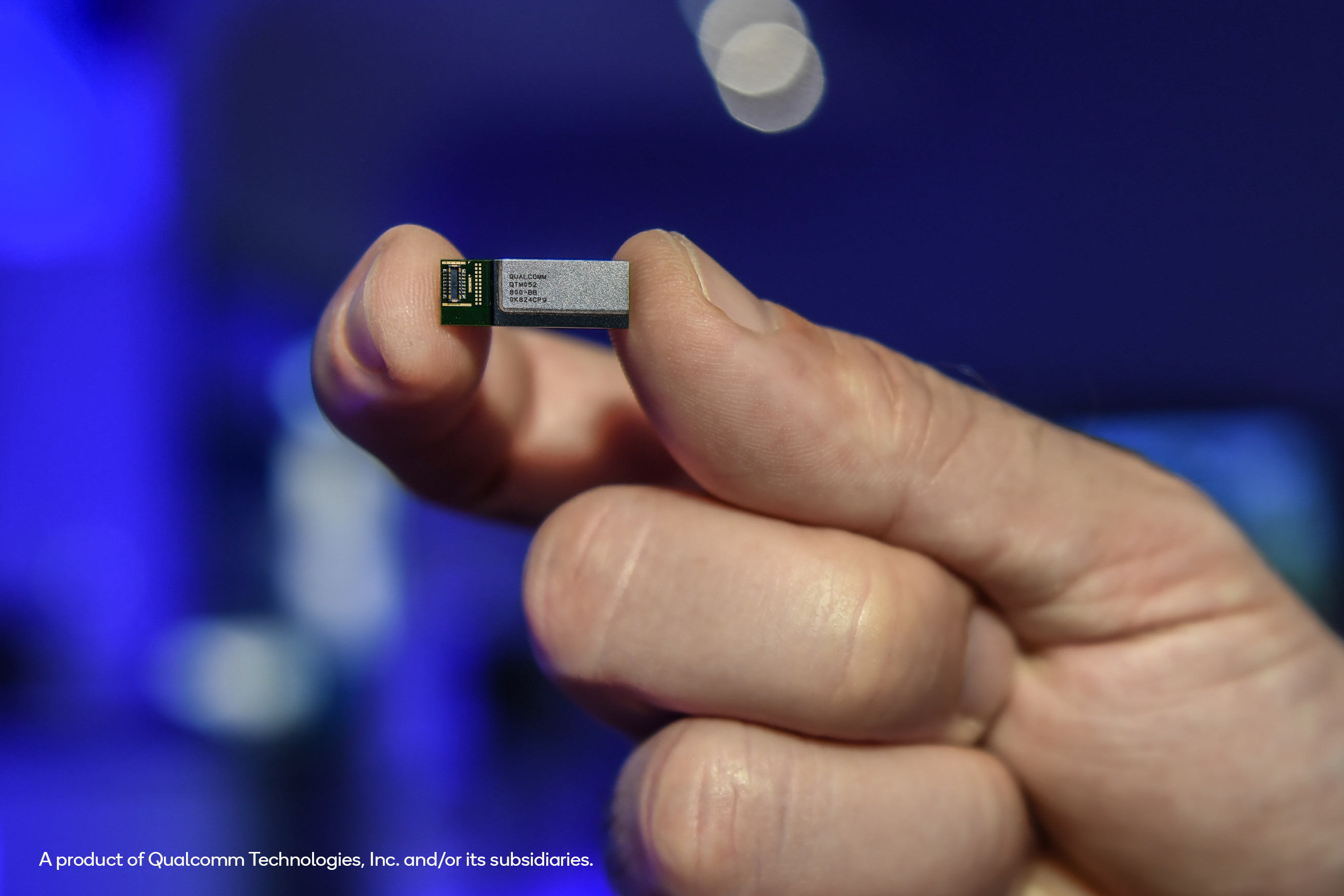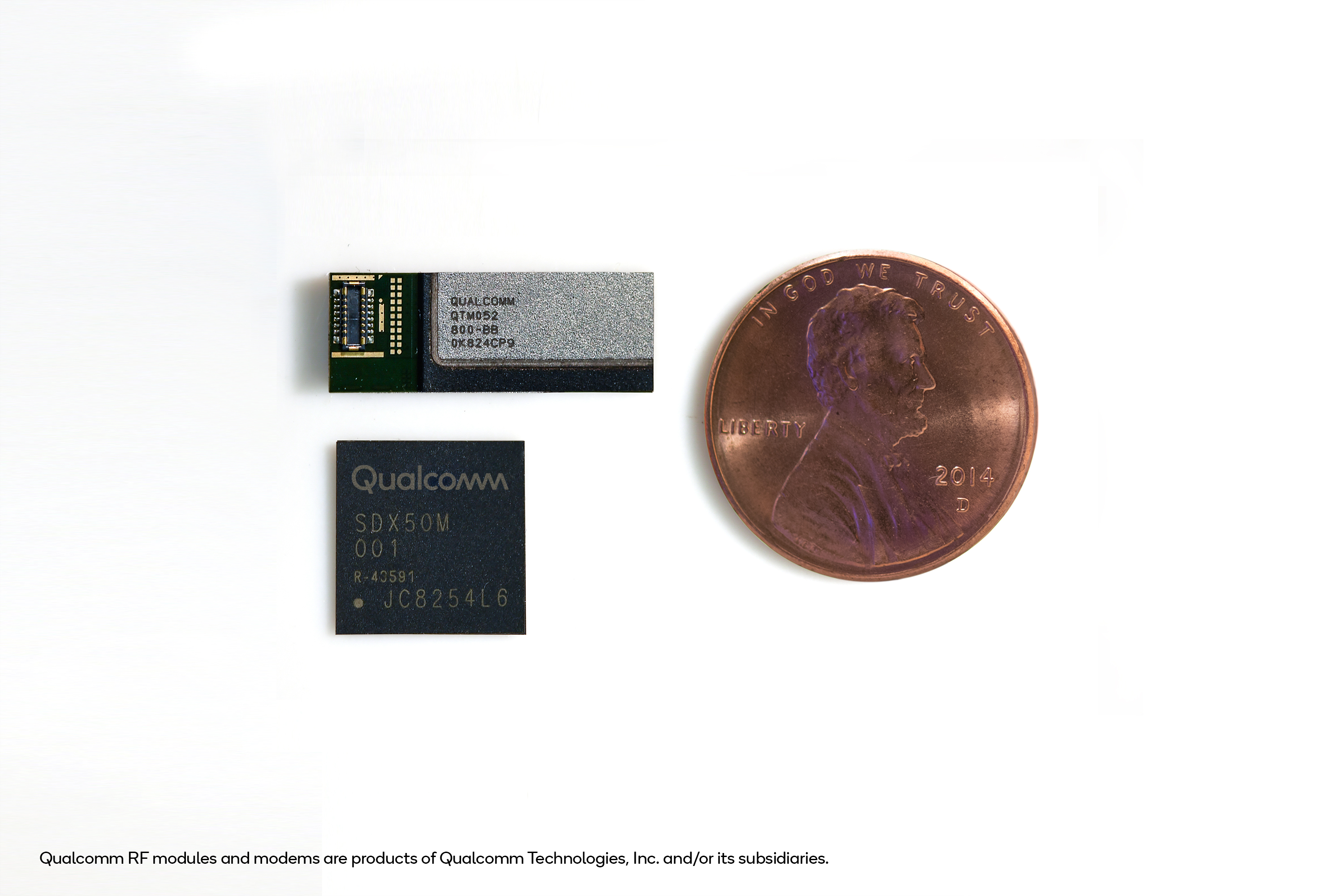
Qualcomm’s QTM052 antenna module (Source: Qualcomm)
Qualcomm has significantly reduced the size of 5G components in a vital step toward making millimeter wave-capable mobile devices a reality — potentially as early as the beginning of 2019.
The chipmaker on Monday unveiled its new QTM052 mmWave and QPM56xx sub-6GHz RF module families. The compact modules, which can fit on a fingertip, support the 3GPP 5G NR specification and work in tandem with the brain of the system: Qualcomm’s Snapdragon X50 5G modem.
Qualcomm’s director of product marketing, Sherif Hanna, said the miniaturized components are “a technological breakthrough in every sense of the word.”
Although mmWave spectrum promises to deliver gigabit speeds, a host of challenges complicated the matter for device makers. In particular, the high-band signals don’t travel very far, can’t penetrate walls and are easily blocked — even by a person holding a handset to make a call.
Qualcomm’s QTM052 features a tiny integrated phased antenna array, RF front-end components, a 5G NR radio transceiver and power management IC. Support for advanced beam forming, beam steering and beam tracking helps point signals to the closest 5G tower and enables signals to ricochet and bounce off surfaces, such as buildings, to maneuver around corners.
Because of their small size, Hanna, using Qualcomm’s 5G smartphone reference design, demonstrated how the modules can fit into the bezel of a mobile phone. Qualcomm’s modem can support up to four of the modules — one for each side of the phone — but Hanna said the company expects most device makers will opt for three. With multiple antenna arrays on different parts of the phone, signals won’t be blocked no matter how users hold the device, according to Hanna.
If an incoming beam is blocked, “the X50 modem inside was already monitoring alternatives on the other modules, so the instant [a signal] is interrupted, data just flows off of the ones immediately,” Hanna said.

Qualcomm’s new mmWave antenna module and the X50 5G modem (Source: Qualcomm)
“The mmWave module announced by Qualcomm today is a turning point for 5G implementation within mobile devices as this could potentially set the standard for plug-and-play RF system design for 5G mmWave,” said Malik Saadi, VP of Strategic Technologies at ABI Research, in emailed comments.
Saadi noted that the modules incorporate all RF components from antenna to transceiver, marking an industry first since device makers usually get RF components from multiple vendors and handle the overall RF system design themselves.
Hanna said Qualcomm believes it’s the only company with a working 5G mmWave solution that fits inside a smartphone, which puts the company in a strong position in mobile mmWave 5G.
“We believe we have a substantial lead and it’s good to have a lead on a very difficult technical problem because it takes others time to catch up,” he said.
Qualcomm has started shipping the new RF modules to customers and Hanna expects to see the first 5G smartphones come out during the first half of 2019. Before that, however, he expects 5G mobile hotspots to debut before the end of the year.
“As the industry moves to 5G, RF front-end (RFFE) designs and RF component procurement will become far more complex and cumbersome for OEMs to handle,” ABI Research’s Saadi added. “Such compact solutions as these from Qualcomm will no doubt help OEMs accelerate smartphone time-to-market without overly compromising the integrity of the devices’ industrial design, performance or cost.”




